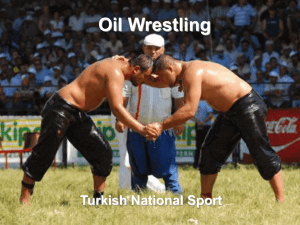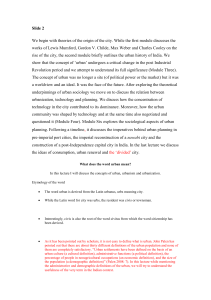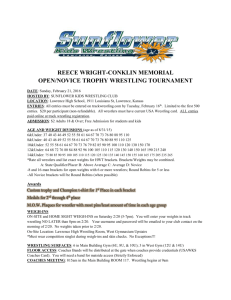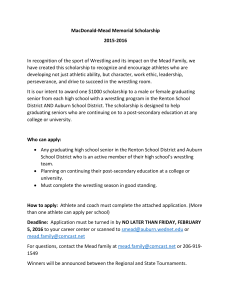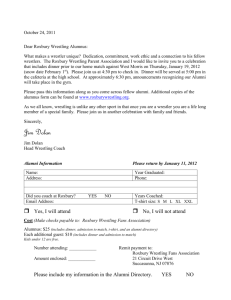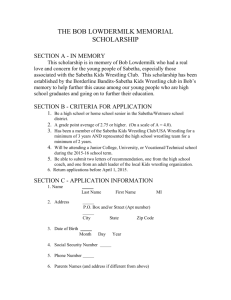Citation guidelines
advertisement
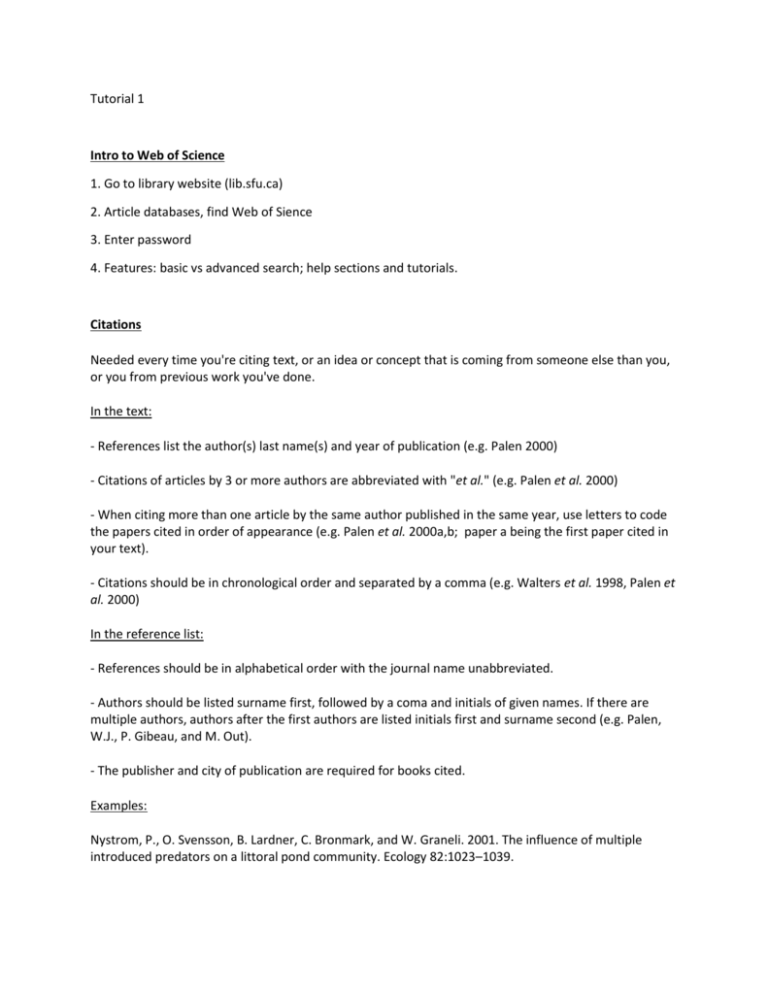
Tutorial 1 Intro to Web of Science 1. Go to library website (lib.sfu.ca) 2. Article databases, find Web of Sience 3. Enter password 4. Features: basic vs advanced search; help sections and tutorials. Citations Needed every time you're citing text, or an idea or concept that is coming from someone else than you, or you from previous work you've done. In the text: - References list the author(s) last name(s) and year of publication (e.g. Palen 2000) - Citations of articles by 3 or more authors are abbreviated with "et al." (e.g. Palen et al. 2000) - When citing more than one article by the same author published in the same year, use letters to code the papers cited in order of appearance (e.g. Palen et al. 2000a,b; paper a being the first paper cited in your text). - Citations should be in chronological order and separated by a comma (e.g. Walters et al. 1998, Palen et al. 2000) In the reference list: - References should be in alphabetical order with the journal name unabbreviated. - Authors should be listed surname first, followed by a coma and initials of given names. If there are multiple authors, authors after the first authors are listed initials first and surname second (e.g. Palen, W.J., P. Gibeau, and M. Out). - The publisher and city of publication are required for books cited. Examples: Nystrom, P., O. Svensson, B. Lardner, C. Bronmark, and W. Graneli. 2001. The influence of multiple introduced predators on a littoral pond community. Ecology 82:1023–1039. Ricciardi, A., and H. J. MacIsaac. 2011. Impacts of biological invasions on freshwater ecosystems. Pages 211–224 in D. M. Richardson, editor. Fifty years of invasion ecology: the legacy of Charles Elton. WileyBlackwell, Chichester, UK. Staudt, A., A. K. Leidner, J. Howard, K. A. Brauman, J. S. Dukes, L. J. Hansen, C. Paukert, J. Sabo, and L. A. Solorzano. 2013. The added complications of climate change: understanding and managing biodiversity and ecosystems. Frontiers in Ecology and the Environment 11:494–501. Plagiarism Unacknowledged use of other people's (or your own previous) ideas or work; often unintentional. Can be avoided through careful work habits. It is a serious academic offense. Example (from library website): Misrepresenting someone else's work as your own: o Copying another student's paper or an article from a journal or website o Buying an essay from a term-paper mill Copying sentences or paragraphs without properly citing their source: o Quoting material without proper use of quotation marks (even if otherwise cited appropriately) o Using specific facts without proper attribution (other than information that qualifies as 'common knowledge') o Using a specific argument or logic without crediting the source o Using art, graphs, illustrations, maps, statistics, photographs, etc. without complete and proper citation o Translating a work from one language to another without complete and proper citation Paraphrasing o Paraphrasing or summarizing information from a source without proper acknowledgement o Re-writing a section but not making it sufficiently different from the original (even if cited appropriately) = patch writing-- needs both words and structure to be changed Getting help: generally ok as long as it remains your own work (e.g. proof reading vs seriously editing a friends paper). See library website for more insights. Library resources: http://www.lib.sfu.ca/help/academic-integrity/plagiarism For a tutorial on plagiarism (helpful to understand nuances): https://canvas.sfu.ca/courses/15986 Examples (from library tutorial): Original passage: “Where mainstream sports typically refrain from displaying unapologetically violent acts, professional wrestling dives in head first. A large portion of wrestling’s cultural appeal is generated by the psychological arousal/excitement provided by witnessing highly aggressive and violent forms of physical interaction in this sphere. Wrestling takes that which is pushed behind the scenes of social life and places it in the center ring” (Atkinson, 2002, p. 62-63). Acceptable Paraphrase: Most sports do not encourage blatant acts of violence, while professional wrestling embraces the same behaviour. Wrestling appeals to audiences because people enjoy watching aggressive and violent acts in the ring. What is normally not condoned in ordinary society is made acceptable in wrestling. (Atkinson, 2002, p. 62-63) Patchwriting: Mainstream sports refrain from showing unremorseful violent acts while professional wrestling unapologetically revels in the same type of violence. A large part of wrestling’s appeal is generated by the very aggressive and violent interaction in this sport. While such violence is usually behind the scenes of social life, it is the centre of wrestling’s existence. (Atkinson, 2002, p. 62-63)

